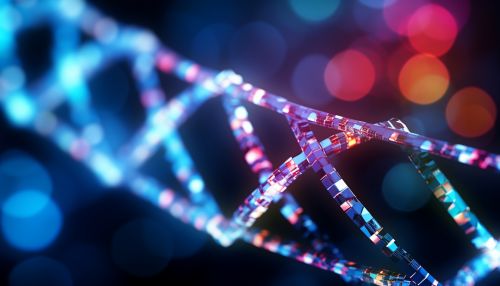Sanger Sequencing
Introduction
Sanger sequencing, also known as the 'chain termination method', is a method of DNA sequencing based on the selective incorporation of chain-terminating dideoxynucleotides by DNA polymerase during in vitro DNA replication. Developed by Frederick Sanger and his colleagues in 1977, it is the most widely used sequencing method for relatively short (up to 1000 base pairs) DNA strands.
Principles of Sanger Sequencing
Sanger sequencing is based on the principle of rapid DNA replication involving the action of DNA polymerases. The key to the method is the use of dideoxynucleotide (ddNTPs) in addition to the normal nucleotides (dNTPs) found in DNA. DdNTPs are essentially the same as dNTPs, but they lack the 3'-hydroxyl group. This absence prevents the addition of further nucleotides, thus terminating DNA strand extension and replication.


Process of Sanger Sequencing
The process of Sanger sequencing includes the following steps:
- Preparation of the DNA template: The DNA sequence to be sequenced is prepared. This can be a single DNA fragment or a larger piece of DNA that has been cloned into a plasmid.
- Primer annealing: A primer, which is a short piece of DNA or RNA that is complementary to the start of the DNA sequence to be sequenced, is added. The primer binds to the DNA template and provides a starting point for the DNA polymerase.
- Dideoxy sequencing reaction: The DNA template, primer, DNA polymerase, and a mixture of all four dNTPs and a small amount of one type of ddNTP are combined in a reaction. The DNA polymerase begins to synthesize a new strand of DNA starting from the primer.
- Termination of the DNA strand: Eventually, the DNA polymerase incorporates a ddNTP instead of a dNTP. This terminates the DNA strand because no further dNTPs can be added.
- Separation and detection of the DNA fragments: The DNA fragments are separated by size using gel electrophoresis. The smallest fragments (those that were terminated earliest) move fastest through the gel, while the larger fragments (those that were terminated later) move more slowly. The position of the ddNTP in each fragment is detected, usually by autoradiography or fluorescence.
Advantages and Limitations
Sanger sequencing has several advantages over other sequencing methods. It is relatively simple and inexpensive, and it produces highly accurate results. However, it also has some limitations. The most significant limitation is the length of DNA that can be sequenced in a single reaction. Sanger sequencing is most effective for sequencing DNA fragments of up to about 1000 base pairs. Sequencing longer fragments requires the DNA to be broken into smaller pieces, sequenced separately, and then the sequences pieced together.
Applications
Sanger sequencing has been used in a wide variety of applications, including genome sequencing, mutation detection, and genetic disease diagnosis. It was the primary method used in the Human Genome Project, which sequenced the entire human genome for the first time.
